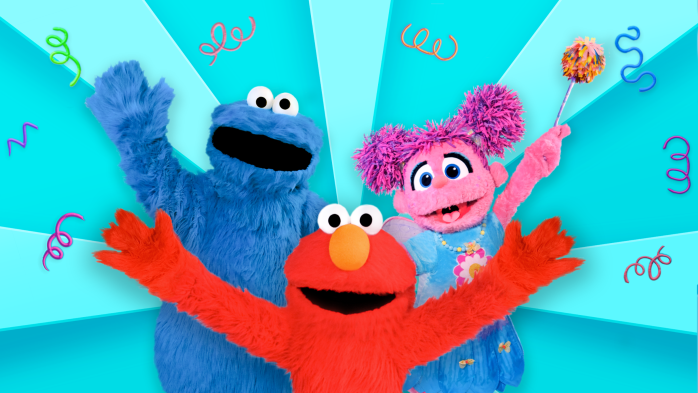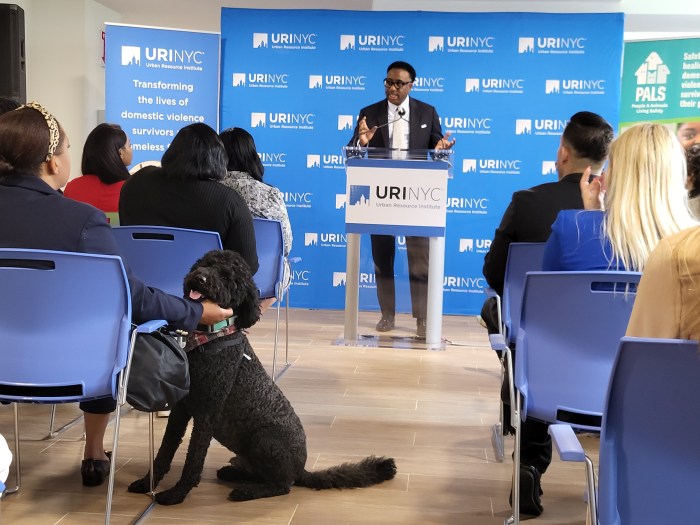By WILL McKINLEY
“The idea of solidity is wrong,” says a character in “Losing Something,” the new multi-media curiosity at the 3LD Art & Technology Center. The concept that reality is malleable and that certainty is just beyond our grasp lies at the core of this occasionally confounding but eminently enjoyable experiment in live theater.
Like 3LD’s other current production, “The Curse of The Mystic Renaldo The,” “Losing Something” eschews the structure of traditional narrative. It’s an amorphous psychological character study of one unnamed, middle-aged man (Aldo Perez) who wanders alone through a dark dreamscape populated by spirits from his past, present and future, all the while stubbornly attempting to maintain a sense of order. Perez’s existential debates with ghostly friends and lovers — and an older version of himself — form the narrative soundtrack for some truly stunning visual slight-of-hand.
Written, directed and designed by Kevin Cunningham, “Losing Something” is stylishly staged using a grab bag of high-end technological trickery, some of it making its North American theatrical debut. The 3LD publicity department would probably like me to tell you all about the technology that allows an actor to perform scenes with three-dimensional representations of other actors who aren’t actually on stage with him. But I’m not going to do that. Half the fun of the show for me was trying to figure out how the hell they were doing what they were doing.
Every time I see a movie in 3D, I want to reach out and grab the image that extends from the screen, even though I know it’s illusory. The same feeling washed over me at the opening night performance of “Losing Something.” I had to fight the urge to rush the stage and flail my arms to determine who was really there and who wasn’t. I’m not accustomed to being baffled by special effects, particularly in live theater. But I felt liberated when I finally stopped trying to figure it out and started reveling in the surreal mystery of it all.
There is no doubt that I spent more time focusing on the how of “Losing Something” than the what of it, but I get the sense that Cunningham planned for that eventuality. He has designed a free-form show that allows the audience’s attention to wander to issues of technique and technology, and then wander back to the on-stage action, without fear of missing vital plot points or exposition. If there is no plot you don’t have to worry about following it.
That’s not to say that the show is just fluffy eye candy. Cunningham (in the person of Perez) clearly has a lot to say, much of it echoing from the shared wound of the Downtown community. Like many of us, the 3LD team was temporarily displaced by the events of September 11. They rose again, phoenix-like, in the absent shadow of the missing towers and the impact of that day informs “Losing Something.”
“I can’t believe those people were holding hands and jumping,” Perez’s elderly doppelganger mutters to himself, and the audience knows exactly what he’s talking about.
But at the same time that “Losing Something” is often deep and resonant, it is also occasionally crass. Perez’s dialogue is littered with self-conscious vulgarity, and there are moments of awkward female nudity and simulated intercourse that take on the character of art school provocation. Cunningham walks a fine line between high art and low culture, and he occasionally misses a step. At times the juxtaposition of poignancy and prurience was met with uncomfortable chuckles from the audience, but that may have been the desired response.
There was also a studied sloppiness amongst the cutting-edge technological precision of the evening, a celebration of the organic nature of imperfection that is becoming a familiar motif for 3LD. At one point the stage lights flare abruptly, blinding the audience, and the room rumbles with a sound of a rebooting Macintosh computer.
“Good work, team,” Perez mutters to the tech crew at the back of the house. While slightly contrived, these moments of planned failure serve to humanize the enterprise, imbuing it with a sense of imperfect live-ness.
My biggest creative disagreement with the show happened after it was over. In the course of the performers’ final bow, the how was finally revealed, much to my disappointment. After all, the best magic tricks are the ones that the audience can never figure out, no matter how hard they try.


















